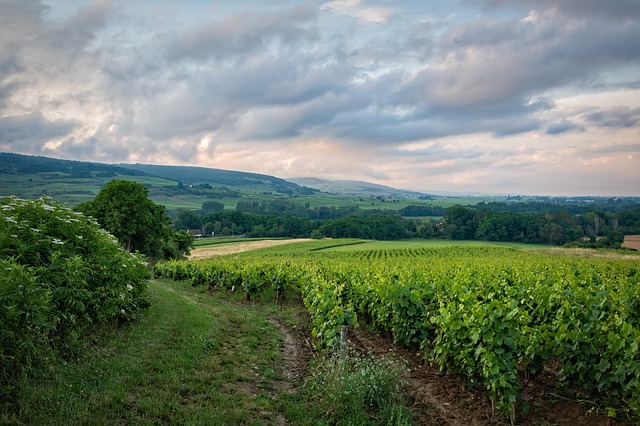Wildlife and Nature Reserves Worth Visiting in Greece

Greece, a country renowned for its ancient history, stunning islands, and vibrant culture, is also a hidden gem for nature enthusiasts. Beyond its iconic ruins and azure seas, Greece boasts an incredible array of wildlife and pristine natural reserves that offer visitors a chance to connect with the raw beauty of the Mediterranean. Whether you’re a birdwatcher, a hiker, or simply someone who loves serene landscapes, Greece’s protected areas are sure to leave you in awe. Let’s explore some of the most captivating wildlife and nature reserves worth visiting in this enchanting country.
1. Dadia-Lefkimi-Soufli Forest National Park: A Birdwatcher’s Paradise
Nestled in the northeastern part of Greece, near the Turkish border, the Dadia-Lefkimi-Soufli Forest National Park is a haven for birdwatchers and nature lovers alike. This lush forested area is part of the Natura 2000 network and is home to one of Europe’s most diverse populations of birds of prey.
- What Makes It Special? The park is famous for its population of rare raptors, including the Eastern Imperial Eagle and the Lesser Spotted Eagle. Visitors can also spot vultures, hawks, and owls soaring gracefully above the treetops. The park’s dense oak and pine forests provide a perfect habitat for these majestic creatures.
- Activities to Enjoy:
- Guided birdwatching tours led by expert ornithologists.
- Hiking trails that wind through the forest, offering breathtaking views of the surrounding landscape.
- Educational visits to the park’s information center, where you can learn about conservation efforts and the unique ecosystem.
- Why Visit? For those seeking tranquility and a chance to witness some of Europe’s rarest birds in their natural habitat, Dadia-Lefkimi-Soufli is an unforgettable destination.
2. Vikos-Aoos National Park: A Hiker’s Dream
Located in the rugged Pindus Mountains in northern Greece, Vikos-Aoos National Park is a UNESCO Global Geopark and one of the most visually stunning natural reserves in the country. The park is dominated by the dramatic Vikos Gorge, often referred to as the “deepest gorge in the world.”
- What Makes It Special? The park’s diverse terrain includes towering cliffs, alpine meadows, and crystal-clear rivers. It is home to a variety of wildlife, such as wolves, bears, and chamois, as well as endemic plant species found nowhere else on Earth.
- Activities to Enjoy:
- Trekking along the famous Zagori Trails, which range from easy walks to challenging hikes.
- Exploring traditional stone villages like Monodendri and Megalo Papigo, perched on the edge of the gorge.
- Rafting or kayaking in the Aoos River for a thrilling adventure.
- Why Visit? Vikos-Aoos National Park offers a perfect blend of adventure and serenity, making it ideal for outdoor enthusiasts and photographers looking to capture Greece’s untamed beauty.
3. Prespa National Park: Where Lakes Meet Wildlife
Straddling the borders of Greece, Albania, and North Macedonia, Prespa National Park is a tranquil oasis centered around two interconnected lakes—Great Prespa and Little Prespa. This wetland paradise is a critical habitat for migratory birds and aquatic life.
- What Makes It Special? The park is home to over 270 species of birds, including the endangered Dalmatian Pelican. Its rich biodiversity extends to fish, amphibians, and mammals, creating a harmonious ecosystem that has been recognized internationally.
- Activities to Enjoy:
- Boat tours across the shimmering waters of Lake Prespa, offering close encounters with pelicans and herons.
- Cycling or walking along scenic paths that hug the shoreline.
- Visiting the picturesque village of Agios Germanos, known for its Byzantine churches and local cuisine.
- Why Visit? Prespa National Park is a peaceful retreat for those who appreciate slow travel and want to immerse themselves in a region steeped in both natural and cultural heritage.
4. Alonissos Marine Park: Protecting the Aegean’s Treasures
As part of the Northern Sporades island chain, Alonissos Marine Park is Greece’s first marine protected area and a sanctuary for marine life. This underwater wonderland is teeming with dolphins, sea turtles, and monk seals—the latter being one of the rarest seal species in the world.
- What Makes It Special? The park plays a vital role in conserving the Mediterranean monk seal (Monachus monachus) and preserving the delicate balance of the Aegean Sea’s ecosystems. Its clear waters are also perfect for snorkeling and diving.
- Activities to Enjoy:
- Snorkeling and scuba diving to discover vibrant coral reefs and underwater caves.
- Joining eco-friendly boat excursions to observe dolphins and seals in their natural environment.
- Relaxing on secluded beaches accessible only by boat.
- Why Visit? Alonissos Marine Park is a must-see for anyone passionate about marine conservation and eager to explore Greece’s lesser-known islands.
5. Samaria Gorge: Crete’s Natural Wonder
No list of Greece’s natural reserves would be complete without mentioning Samaria Gorge, located in southwestern Crete. This 16-kilometer-long canyon is part of the White Mountains and attracts thousands of visitors each year.
- What Makes It Special? Samaria Gorge is not only a geological marvel but also a refuge for the Cretan wild goat, known locally as the “kri-kri.” The trail takes you through narrow passageways, past ancient ruins, and finally opens up to the sparkling Libyan Sea.
- Activities to Enjoy:
- Embarking on the full-day hike through the gorge, suitable for all fitness levels.
- Cooling off at the beach in Agia Roumeli after completing the trek.
- Learning about the flora and fauna from informative signs placed throughout the route.
- Why Visit? Samaria Gorge offers a unique combination of physical challenge and natural splendor, making it a bucket-list experience for adventurers.


